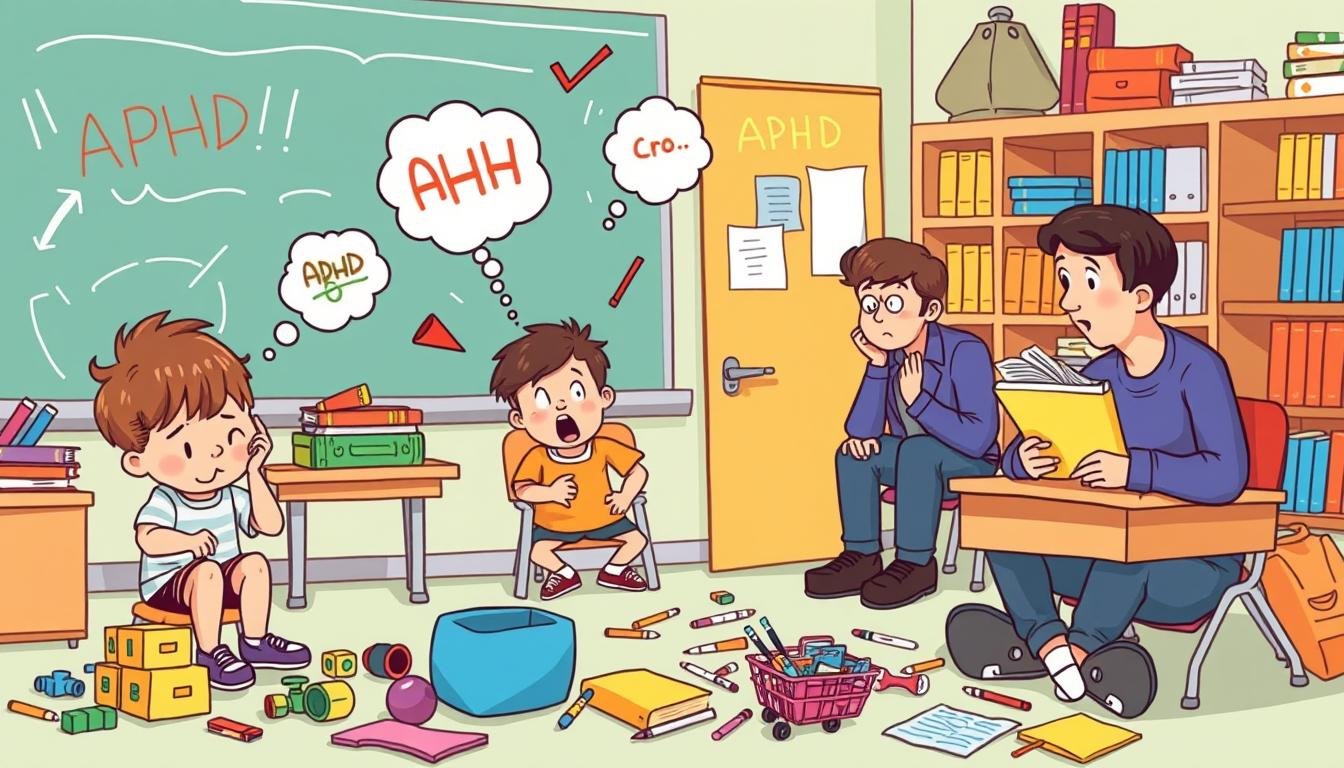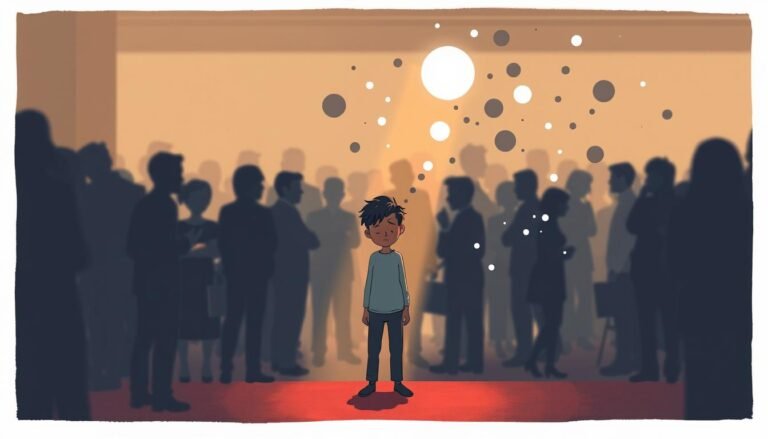Understanding Hyperactivity Disorder: Causes & Care
Ever wondered why some kids seem to bounce off the walls while others struggle to focus? Welcome to the world of Attention Deficit Hyperactivity Disorder (ADHD). It’s a complex condition that affects millions of children and adults worldwide.
ADHD is more than just fidgety behavior or daydreaming. It’s a neurodevelopmental disorder that can significantly impact daily life. In the U.S., nearly 11% of children aged 2-17 have been diagnosed with ADHD. Globally, the figure stands at 7.2% of children.
Boys are diagnosed more than twice as often as girls, which raises questions about how ADHD manifests differently across genders. The disorder isn’t one-size-fits-all; it presents in various ways, with the combined type accounting for about 70% of cases.
From impulsivity to inattention, ADHD symptoms can persist into adulthood, affecting work, relationships, and self-esteem. As we dive deeper into this topic, we’ll explore the causes, symptoms, and care strategies for those living with ADHD.
What is Hyperactivity Disorder and Its Core Symptoms
Hyperactivity disorder, also known as ADHD, affects both kids and adults. It’s marked by ongoing patterns of restlessness, fidgeting, and concentration problems. These issues can make daily life hard, messing with school, work, and relationships.
Definition and Key Characteristics
ADHD is a brain disorder causing trouble with focus, excess movement, and rash actions. For a diagnosis, these signs must start before age 12 and last at least six months. They also need to show up in different settings, like home and school.
Types of ADHD Presentations
ADHD comes in three types:
- Inattentive: Trouble focusing
- Hyperactive-Impulsive: Can’t sit still, acts without thinking
- Combined: Shows both focus and hyperactivity issues
Boys tend to show more hyperactive signs, while girls often struggle more with focus.
Common Signs and Behavioral Patterns
Key ADHD signs include:
- Fidgeting or squirming
- Difficulty staying focused on tasks
- Talking too much
- Trouble waiting for turns
- Often losing things needed for tasks
These symptoms can change as people age. Kids might be more hyper, while teens and adults may feel restless inside.
“ADHD is not just about being hyper. It’s a complex disorder that affects focus, impulse control, and daily functioning.”
The Science Behind ADHD Development
Attention Deficit Hyperactivity Disorder (ADHD) is a complex condition. It has roots in both genetics and environment. Research shows ADHD affects about 5% of children worldwide, making it a common childhood disorder.
Understanding the science behind ADHD is key for effective management and treatment.
Genetic and Environmental Risk Factors
ADHD has a strong genetic component. Studies reveal a heritability rate of 76%, showing genes play a big role. Environmental factors like toxins or maternal substance use during pregnancy can increase risk. Premature birth is also linked to ADHD.
Brain Development and Neurobiology
Brain structure and function differ in those with ADHD. Research shows children and adolescents with ADHD have brains 3-4% smaller. These differences are seen in areas related to attention and impulse control.
Impact of Early Life Experiences
Early life experiences can influence ADHD development. Stress or trauma during childhood may contribute to symptoms. It’s important to note that ADHD often persists into adulthood, with 65-75% of cases continuing into early adulthood.
“ADHD is a real disorder with potentially devastating consequences if left untreated. It’s crucial for parents and educators to recognize the signs early and seek proper diagnosis and treatment.”
Ongoing research aims to deepen our understanding of ADHD’s neurobiological basis. This knowledge will help develop more effective treatments and support strategies for those living with Attention Deficit Hyperactivity Disorder.
Diagnosis and Assessment Methods
Diagnosing ADHD needs a detailed check by experts. This process has several steps to make sure it’s right and to rule out other issues. Let’s look at what’s involved in assessing ADHD.
Experts use the DSM-5 or ICD-11 to spot ADHD. These guides list the signs of not paying attention, being too active, and acting on impulse. A correct diagnosis looks at how bad these signs are and how long they last in different places.
The evaluation includes:
- Talking with the patient
- Looking at medical and family history
- Watching how they behave
- Using special rating scales
- Tests for thinking skills
For grown-ups, figuring out ADHD might take more than one visit. Doctors use the Adult ADHD Clinical Diagnostic Scale (ACDS) and the Adult ADHD Self-Report Scale (ASRS). These tools help see how symptoms affect daily life.
It’s important to remember that ADHD signs can look like other problems. So, finding out what’s really going on is key. Doctors have to make sure it’s not something else before saying it’s ADHD.
| Assessment Component | Purpose |
|---|---|
| Clinical Interview | Gather patient history and symptom information |
| Rating Scales | Quantify symptom severity and frequency |
| Cognitive Tests | Assess attention, memory, and executive function |
| Behavioral Observations | Observe symptoms in real-time settings |
Getting a correct diagnosis is the first step to finding the right treatment. This includes therapy and other plans made just for the person.
Treatment Approaches and Management Strategies
ADHD affects 3% to 7% of school-aged children worldwide. Effective treatment often involves a mix of approaches tailored to each person’s needs.
Medication Options and Their Effects
Stimulant medications are the most common treatment for ADHD. These drugs target brain chemicals linked to attention and behavior. While they help many, 30% to 50% of people with ADHD don’t respond well to stimulants. Side effects can include sleep issues, appetite loss, and mood changes.
Behavioral Therapy and Interventions
Behavioral therapy is a key part of ADHD treatment. It helps people develop coping skills and improve social interactions. For kids 6 and older, the American Academy of Pediatrics suggests combining medication with behavior therapy for best results.
Lifestyle Modifications and Support Systems
Simple changes can make a big difference for those with concentration problems. Setting routines, improving sleep habits, and staying hydrated are helpful. Support from family and joining ADHD groups can provide valuable emotional backing.
School and Workplace Accommodations
Schools and workplaces can offer support to those with ADHD. This might include extra time for tasks or quiet work areas. These changes can help people with ADHD succeed in their daily lives.
| Treatment Type | Effectiveness | Common Side Effects |
|---|---|---|
| Stimulant Medications | 50-70% effective | Sleep issues, appetite loss |
| Behavioral Therapy | Highly effective when combined with medication | None reported |
| Lifestyle Changes | Effective as supportive treatment | None reported |
Remember, ADHD treatment plans should be personalized. What works for one person might not work for another. Regular check-ins with healthcare providers can help fine-tune treatment strategies over time.
Conclusion
Hyperactivity Disorder, also known as Attention Deficit Hyperactivity Disorder (ADHD), affects millions worldwide. It impacts about 5% of children and teens globally. Symptoms often last into adulthood.
Early diagnosis and intervention are crucial. While boys show higher rates of ADHD, it affects both genders. It often comes with other conditions, like anxiety or depression.
Treatment options, including medication and therapy, can significantly improve symptoms. Stimulants and non-stimulants both show positive results in reducing ADHD symptoms.
Research points to a strong genetic component in ADHD, with a 76% heritability rate. Environmental factors play a role too. Brain differences in individuals with ADHD have been noted, particularly in areas linked to attention.
With proper support and management, people with ADHD can lead successful, fulfilling lives. As our understanding of ADHD grows, so do treatment options. Ongoing research continues to shed light on this complex disorder, offering hope for better outcomes.
Remember, each person with ADHD is unique, and tailored approaches often yield the best results.
Source Links
- Attention-Deficit/Hyperactivity Disorder (ADHD)
- What is ADHD?
- Attention-Deficit/Hyperactivity Disorder
- Attention-Deficit/Hyperactivity Disorder: What You Need to Know
- Attention-deficit/hyperactivity disorder (ADHD) in children – Symptoms and causes
- Attention deficit disorder/hyperactivity: a scientific overview
- The Science of ADHD – CHADD
- Assessment and Diagnosis
- ADHD assessment & diagnosis | ADHD Institute
- Management of attention-deficit hyperactivity disorder
- Treatment of ADHD
- Treatment and Management
- Conclusions – Diagnosis of Attention-Deficit/Hyperactivity Disorder
- Attention deficit disorder/hyperactivity: a scientific overview
- Understanding ADHD








